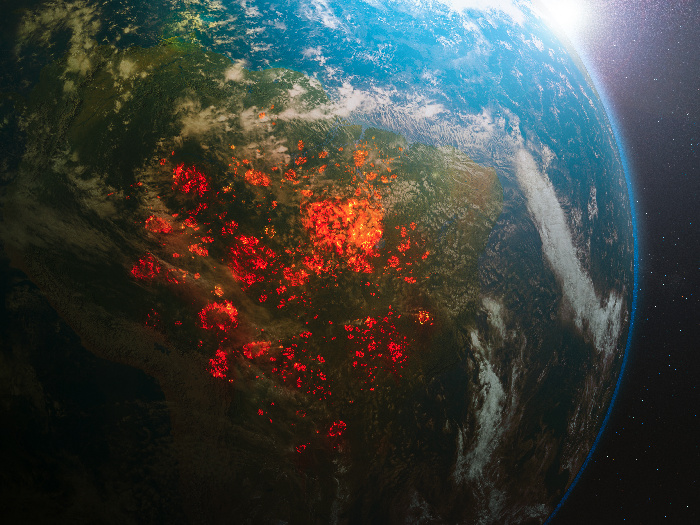At a time when various factors play into the efforts towards conservation of natural resources and territories, a study points out one aspect we cannot compromise on. New research suggests that conservation of the Amazon rainforest cannot be done effectively without taking into consideration the indigenous people and consequently align all goals.

Wildfires in the forest. Photo Credit: Shutterstock
The indigenous territories form about 45 percent of the land of the Amazon rainforests, or what remains of the wilderness today. The study points out that it is roughly equivalent to thrice the surface area of Germany. Apart from raging wildfires which cause long-term damage to the ecosystem, forest and wildlife conservation efforts all around the world are met with several roadblocks and challenges.
The new research, conducted by a team at the University of Helsinki, helps understand that supporting indigenous rights and interests will be a step in the right direction for the conservation agenda which pools in various efforts from various sectors. [1]
“In our paper, we show that supporting Indigenous peoples’ rights is in the interest of the conservation agenda,” says Dr. Álvaro Fernández-Llamazares from the University of Helsinki. “The future of a substantial proportion of the Amazon’s biodiversity depends largely on coordinated action to support and strengthen Indigenous peoples’ rights across the entire region.”
This could help provide a more precise direction in times when authorities have put conservation efforts on the backburner. “There is no doubt that the Amazon is at a crossroads in its social-ecological history,” adds Dr. Fernández-Llamazares. “Rollbacks on environmental protections and Indigenous Peoples’ rights across the entire region are opening up vast natural areas to new external pressures.”
The study has now been published in the Trends in Ecology & Evolution journal. [2]
